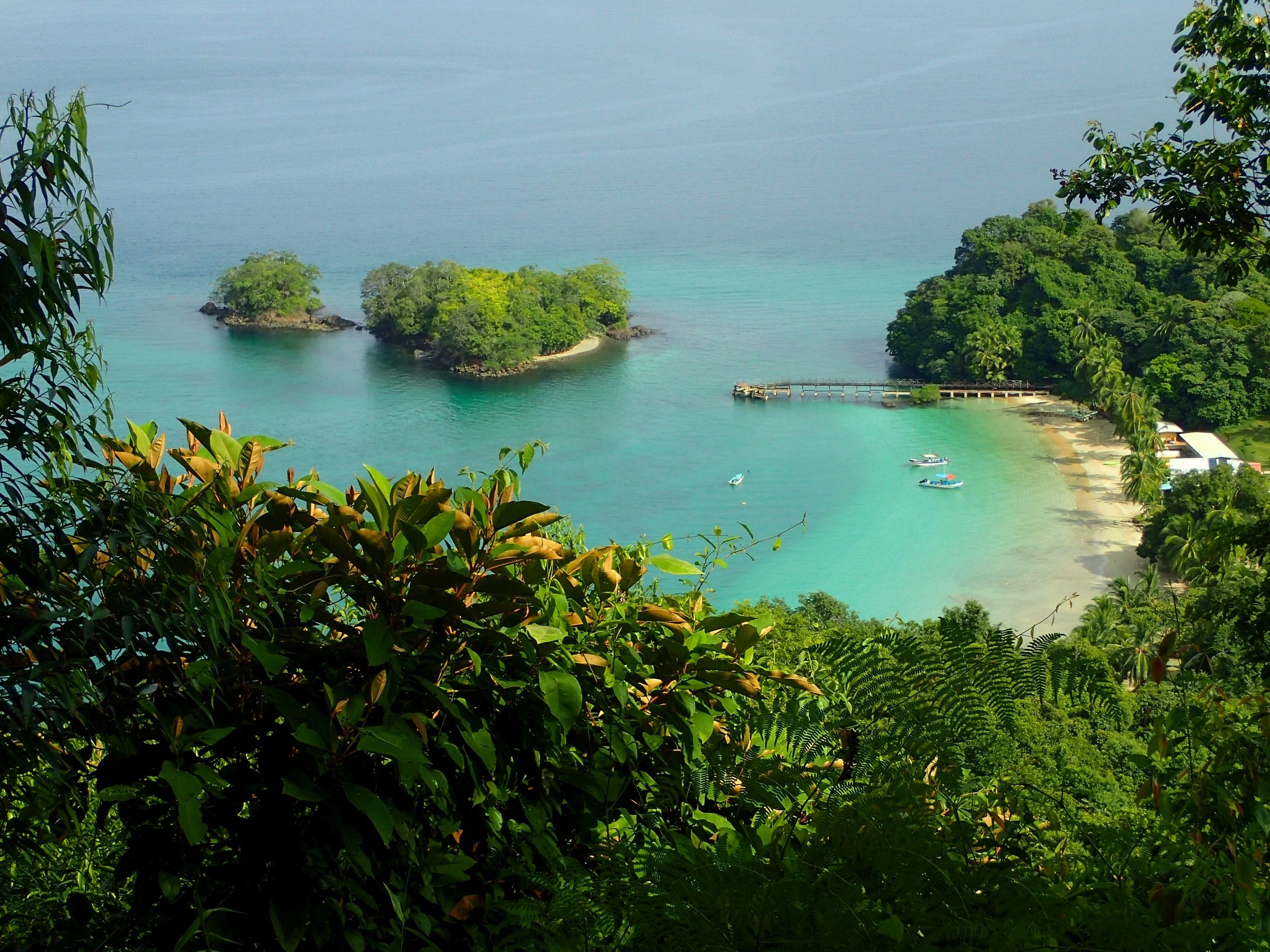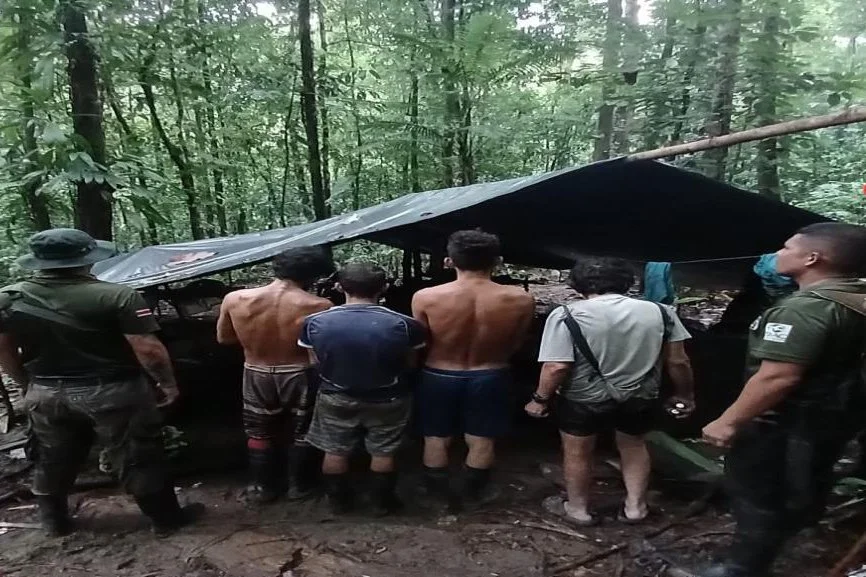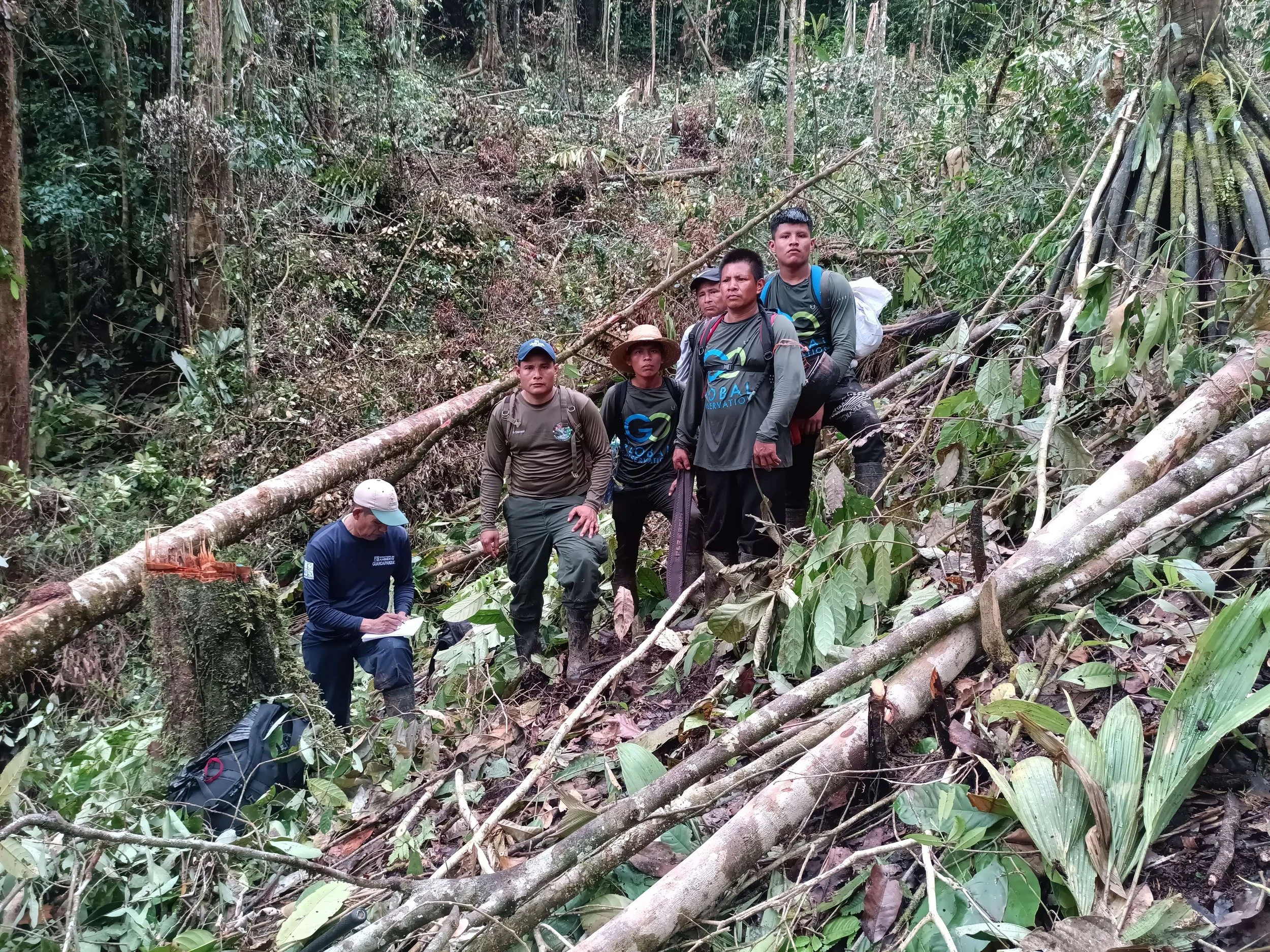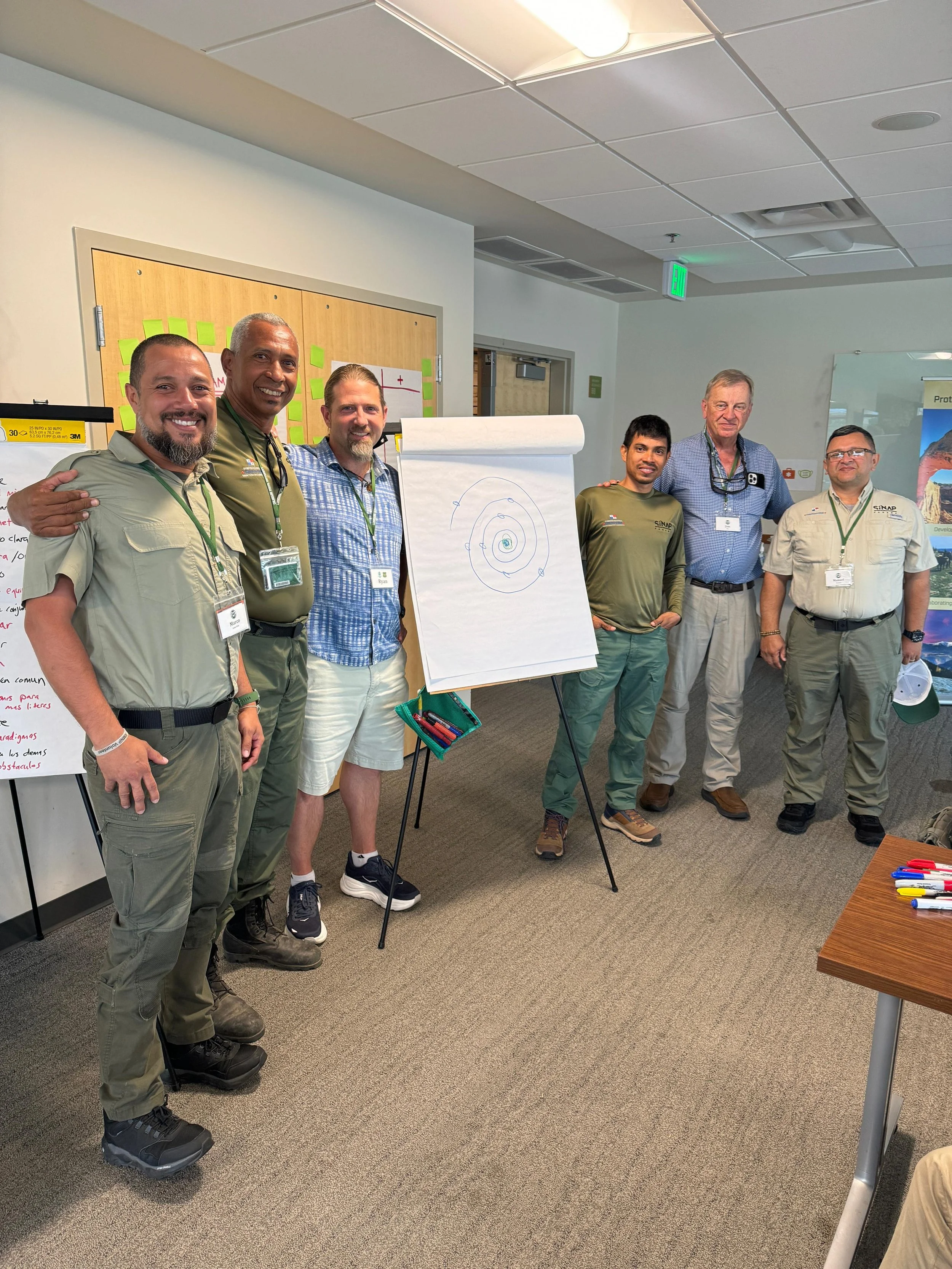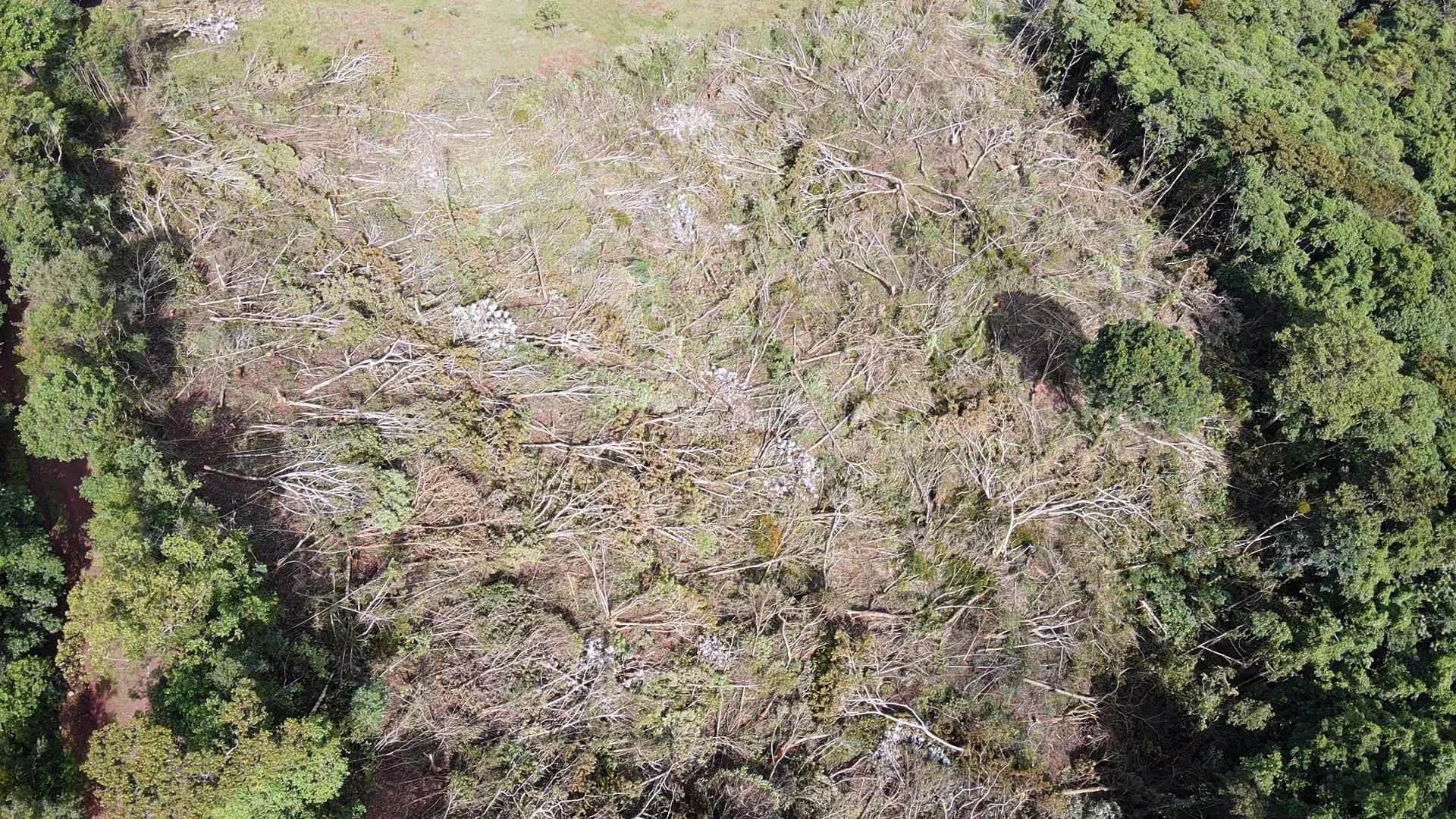New GC Marine Radar Captures Six Illegal Boats in First Month in Coiba National Marine Park, Panama
Update: 08/30/25On August 28th, 2025, a new capture was made of a vessel engaged in illegal fishing in Coiba National Park. The new patrol boat, along with the new M2 Radar from ProtectedSeas and funded by GC, made this achievement possible, marking the second open-sea capture since the vessel began operating in Coiba.
Support the Protection of Wildlife and Natural Habitats
New GC Marine Radar Captures Six Illegal Boats in First Month in Coiba National Marine Park, Panama
The Coiba Island M2 Radar, developed by GC/ProtectedSeas, continues to detect illegal fishing activities within the protected waters of Coiba.
Sea snail fishing is an overexploited activity in many parts of the Pacific. These boats were captured while their occupants were freediving; at first glance, they appeared to be anchored.
Spearfishing It is a type of fishing with a low impact on fish, but during fishing, divers catch other species such as lobsters and snails. This type of fishing is a form of subsistence fishing due to the type of fishing gear used (artisanal). However, it is caught in an unsuitable location, using illegal fishing methods due to the lack of permits.
Fishing with trammel nets or gillnets are used by community fishermen. This type of fishing generates an impact on ecosystems and species, since due to its low selectivity it captures non-commercial animals, turtles, and there are known cases where these fishing gears, when they break or are lost at sea, remain entangled in animals for years.
Update: 04/25/25
President of Panama José Raúl Mulino Applauds Global Conservation and MiAmbiente Deploying World-Class Marine Protection and Radar Technology
Coiba National Marine Park is an endangered UNESCO World Heritage Site Threatened by Illegal Fishing and Turtle Poaching
In his weekly national address on television, President José Raúl Mulino expounded on Global Conservation’s Marine Protection program in Coiba National Marine Park, detailing the support, equipment, training, and new Marine Monitor radar installation, which resulted in multiple illegal fishing arrests in its first month of operations.
Recently deployed radar provided by Global Conservation will help ensure protection for land and sea in one of the most beautiful and ecologically rich areas in Panama.
Over the past six months of the new Presidency of Panama, under the Minister of Environment, H.E. Juan Carlos Navarro, this newly emerging country has undertaken unprecedented steps to protect its forests, wildlife, and marine ecosystems to enable a bright future for tourism and sustainable development.
“Talking won’t save our Planet.”
-H.E. Juan Carlos Navarro, Minister of Environment
Panama has taken bold steps in the past year to protect its incredible natural resources:
Enacted a province-wide logging moratorium in Darien to stop illegal cutting and clearing of tropical rainforests until a new permitting system is deployed.
Shut down, by popular protests, the largest mining operation in the country.
Hired 250 new national park rangers with trucks, boats, and necessary equipment.
Deployed new technologies like Satellite Monitoring, Marine Radars, Cellular Trailcameras and systems like EarthRanger and Skylight.
Support Indigenous Communities like the Naso Kingdom to protect their Comarcas.
Restructure the Ministry of Environment to remove corrupt and ineffective officials.
Make Nature and Tourism a leading strategy for the country’s sustainable development.
Last month, Panama interdicted sixteen fishing boats in the Coiba National Marine Park using an advanced marine protection system to detect illegal fishing around the UNESCO World Heritage site and deep in the Pacific. The raid was the largest bust in the history of the country, and it was just the beginning of a new chapter for Panama Park.
New gear is provided to the park rangers to help safegaurd the integrity of the highly biodeiverse region.
Global Conservation Delivers World-Class Ranger Training and Radar Technology to Protect Coiba National Marine Park in Panama
In a groundbreaking conservation initiative, Global Conservation has completed a high-impact field training and technology deployment mission in Panama’s Coiba National Park, a UNESCO World Heritage Site. Over the course of four days, 18 park rangers received advanced marine protection training from international law enforcement experts, reinforcing Panama’s efforts to combat illegal fishing and safeguard one of the most biodiverse marine ecosystems in the Eastern Pacific.
This inauguration of GC’s Marine Protection program took place during a working visit to Coiba island by Minister Juan Carlos Navarro and GC’s Executive Director Jeff Morgan to review the area's work plans for upgrading park facilities and learn from MiAmbiente teams about the threats and technical and scientific requirements for Marine Protection, while strengthening GC’s partnership with Panama to strengthen the control and protection of the country’s three most important national parks with over 4 million hectares of intact tropical rainforests and marine ecosystems.
As part of the mission, Global Conservation officially inaugurated a new state-of-the-art marine radar system installed on Isla Coiba as a core component of its Global Park Defense program. This technology will enable continuous monitoring of the park’s vast marine territory, enhancing the response capacity of enforcement teams to illegal activities such as poaching and unregulated fishing.
“Coiba is a crown jewel in marine biodiversity, and we are proud to support Panama with the tools, training, and international cooperation needed to protect it,” said Jeff Morgan. “Our long-term commitment to Coiba reflects its global significance and our shared responsibility to preserve it for future generations.”
This mission underscores Global Conservation’s dedication to empowering frontline park rangers and strengthening enforcement in World Heritage Sites across the globe.
The training was led by David Bess (left), former Chief of California Fish and Wildlife, and Michael Stefanak (middle), former Assistant Chief of Marine Protection, who together bring decades of enforcement experience and global collaboration. Their sessions focused on marine threat assessments, interdiction strategies, and new surveillance technologies, equipping rangers with tools and knowledge to better protect this critical marine area.
In addition to the Marine Monitor radar system, which costs approximately $150,000, park rangers were also given 25 smartphones to implement the Earthranger park protection real-time platform, which will integrate all patrolling with the marine radar to generate real-time alerts. The GC Marine Protection system was developed by the Protected Seas and AllenAI EarthRanger organizations.
The inauguration of this innovative marine protection system is part of the MOU agreement between Global Conservation and Panama’s Minister of Environment (MiAmbiente) to deploy Global Park Defense, Community Protection combined with scientific fisheries and coral monitoring, as well as technical support and logistical assistance.
Other GC Projects protecting national parks and indigenous reserves in Panama include the endangered UNESCO World Heritage sites of Darién National Park, La Amistad International Park, and the Naso Kingdom, Panama’s largest indigenous territory, all facing rising threats of illegal logging, mining, land clearing, fires, and cattle ranching within the national parks.
Introduction to Coiba National Park, Panama
Coiba National Park, off the southwest coast of Panama, protects Coiba Island, 38 smaller islands, and the surrounding marine areas in the Gulf of Chiriqui. They are all part of the UNESCO World Heritage Coiba National Park and Special Zone of Marine Protection. Coiba’s Pacific tropical rainforest maintains exceptionally high levels of endemism of mammals, birds, and plants due to the ongoing evolution of new species. It is also the last refuge for a number of threatened animals, such as crested eagles and scarlet macaws, birds that have virtually disappeared from the rest of Panama. Coiba also offers 20 endemic bird species, including the Coiba spinetail.
With an incredibly small population represented in Panama, it’s not an understatement to say that this crested eagle chick represents the future of its species. Shy and elusive, actually seeing one of these birds of prey is incredibly rare. Global Conservation is now helping bear the responsibility of protecting some of the last individuals in Panama, which live in Coiba. Photo ©adobestock
It is the last refuge for a number of threatened animals, such as the crested eagle. The property is an outstanding natural laboratory for scientific research and provides a key ecological link to the Tropical Eastern Pacific for the transit and survival of pelagic fish and marine mammals.
The beaches and waters surrounding Coiba Island offer shelter to four turtle species: leatherback, hawksbill, olive, and loggerhead. Other local species include the Coiba Island Agouti (Dasyproctae coibae), the Mantled Howler Monkey, an opossum, and a white-tailed deer. Over 30 varieties of bats also call Coiba home.
The property contains marine environments that have characteristics of both a continental and oceanic influence and include insular marine coastal and terrestrial island ecosystems. This wide range of environments and resulting habitats is a result of the property’s location, close to the edge of the continental platform and, at the same time, to the mainland. These features combine to produce landscapes of incomparable beauty that are home to an exceptionally high level of endemism for mammals, birds, and plants. An outstanding natural laboratory, the property provides a key ecological link to the Tropical Eastern Pacific and an important area for scientific research.
Coiba National Park encompasses over 270,125 hectares, of which 216,500 hectares are marine, and 53,625 ha are insular and include Coiba Island along with 38 smaller islands. The Special Zone of Marine Protection is included within the boundaries of the property as a buffer area to the core area of the National Park and encompasses an additional 160,700 hectares.
The Ministry of Environment’s Ranger and Field Station (buildings directly on the right) offers itself as a stay for visitors as well. It offers simple 2-room cabins with air conditioning.
The North end of the island is the most accessible from the mainland and is the home of the Ministry of Environment’s ranger station. This is the most visited end of the island and home to beautiful white sand beaches with clear water. The close proximity of other islands, such as Rancheria and Las Canales, makes this a popular playground for divers and day visitors.
The South end of Isla Coiba is relatively untouched by humans. It offers large waves and pristine beaches. It is a favorite for surfers staying in Santa Catalina who are looking for a memorable ride in without any crowds. It takes longer to get to than the North Shore, but it offers untarnished nature and easy access to Jicaron just offshore.
Marine Protection in Coiba UNESCO World Heritage
Rangers find illegally taken fish in Coiba’s waters, part of the UNESCO World Heritage Coiba National Park and Special Zone of Marine Protection.
In Panama, Global Conservation is deploying Global Park Defense in Coiba National Park, a UNESCO World Heritage site with excellent intact marine ecosystems facing increasing pressures from illegal fishing and wildlife poaching. Global Conservation funded a state-of-the-art radar system, created by Protected Seas, which significantly strengthens the protection, conservation, and surveillance efforts against illegal fishing in this nature reserve.
Coiba National Park marks a significant advancement in the preservation of the marine ecosystems within this protected area, as the radar serves as a remote surveillance instrument that facilitates the effective identification of threats from afar. Additionally, it can generate information that can be used in legal proceedings and historical records, such as areas of high traffic or periods of greater impact, with which management and protection strategies for this area could be developed.
Rangers find, confiscate, and place under arrest fishermen who are found poaching inside Coiba’s waters.
Impacts of Radar Protection
The most significant short-term effect on conservation is the rise in the number of seizures and confiscations of vessels engaged in illegal fishing within the park. In the long run, it is anticipated that threats within the park may diminish, as an increase in seizures would likely correlate with a reduction in illegal fishing activities within the protected area.
The Eastern Tropical Pacific Marine Corridor (CMAR) is a regional initiative that includes the Galápagos Islands and marine protected areas (MPAs) supported by Global Conservation, including Coiba National Marine Park in Panama and Cocos Island in Costa Rica.
CMAR aims to conserve biodiversity and sustainably use marine resources in the region. The initiative seeks to create a biological corridor that connects the MPAs, which share biodiversity, ecological connectivity, and oceanographic features.
Coiba National Marine Park is a designated UNESCO heritage site brimming with marine wildlife, mammals, and large aggregations of fish. Due to the fact it was a prison until 2004, Coiba is relatively untouched and pristine. In recent years, there has been increased illegal fishing and human activities.
With increasing illegal fishing in the Coiba area and unsustainable fishing practices, abandoned nets and long lines are increasing in the area, presenting an ever-present danger for marine life and tourism activities.=
The size and length of the property allows for the protection of a whole and healthy ecosystem that is one of the last major refuges for rare and endangered species of tropical America. The conservation of the property is the main objective of close cooperation between the several stakeholders that form the Coiba National Park’s Directors Board, the authority responsible for the governance and management of the property.
Fishing pressures on both the Coiba National Park and the Special Zone of Marine Protection are some of the threats and impacts on the property, and, along with infrastructure development, agriculture, forest cutting, human settlements, and exploration and exploitation of mineral resources, while strictly prohibited, remain potential threats. These issues have been extensively addressed by the management authority, along with NGOs that support continued conservation efforts and require ongoing investment in regards to monitoring.
Tourism interest in the property has grown and is expected to increase with the number of visitors growing rapidly. Tourism activities include the use of the beaches and coastal areas as well as underwater activities and need to be monitored and managed so as to prevent significant impacts on the property and its values. As with other Marine Protected Areas, both in the region and worldwide, the property faces the threats and impacts resulting from climate change, such as coral bleaching, stronger and more frequent hurricanes, and sea level rise.
The Ecological Significance of the Eastern Tropical Pacific
The ETP is a vibrant and diverse marine ecosystem, vital for the reproduction, migration, and distribution of wildlife such as tuna, sharks, sea turtles, whales, and marine birds. The region includes an “Ecologically and Biologically Significant Area” designated by the Convention on Biological Diversity, as well as four UNESCO Marine World Heritage Sites: the Galapagos Archipelago in Ecuador, Cocos Island in Costa Rica, Coiba Island in Panama, and Malpelo Island in Colombia.
Despite its ecological significance, the ETP is under increasing threat from illegal, unreported, and unregulated (IUU) fishing. These activities endanger the region’s biodiversity and the livelihoods of coastal communities that rely on healthy marine ecosystems. Through this project, WildAid and its partners aim to counter these threats by working closely with local governments and institutions to strengthen enforcement measures in marine protected areas (MPAs) and surrounding waters.




































